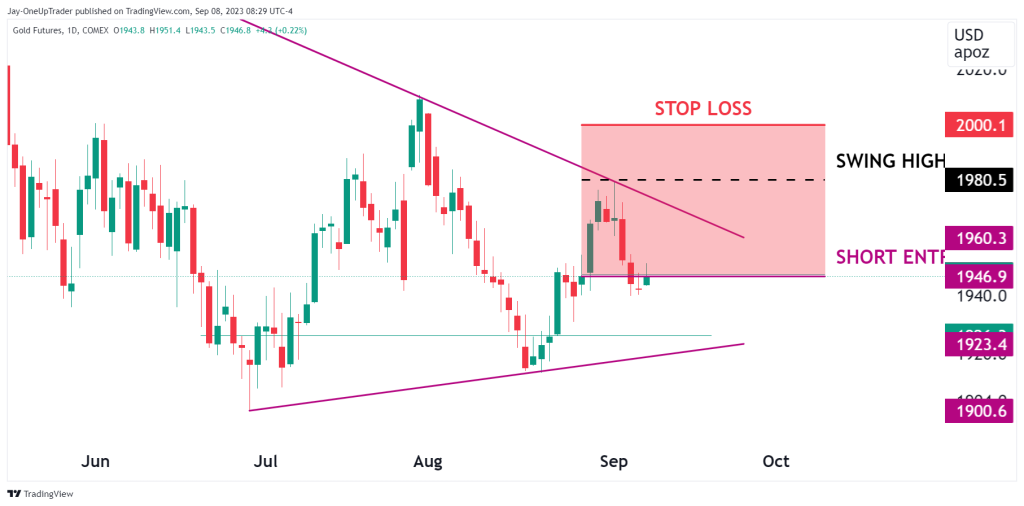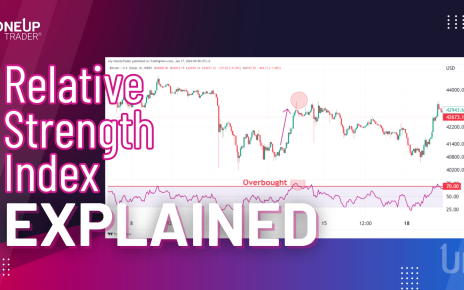When it comes to managing risk in trading, it is essential to understand how to do it effectively. Whether you’re a seasoned trader or just starting your journey into the financial markets, understanding the importance of managing risk is essential to safeguarding your capital and achieving long-term success. This guide will explore why risk management is crucial in trading, techniques to manage risk effectively, and how to navigate the emotional rollercoaster that comes with it.
Why Risk Management Matters
Trading, by its very nature, involves inherent risks. Most traders don’t really understand this. In order to make money, you have to be willing to lose money. The market’s unpredictable movements can catch even the most experienced traders off guard. Without a robust risk management strategy in place, you leave yourself vulnerable to significant losses that could potentially wipe out your trading account. Here are some compelling reasons why effective risk management should be at the forefront of your mind:
Protecting Your Capital
The primary goal of any trader is to preserve capital. By implementing sound risk management principles, you protect yourself from excessive exposure to losses. This approach allows you to weather temporary setbacks and maintain a healthy trading account over the long term. It is the only way to make it in the long run.
Mitigating Emotional Biases
It’s no secret that emotions can cloud judgment and lead us astray. Fear and greed often drive impulsive decision-making, causing us to abandon our rational strategies to chase quick profits or avoid losses at all costs. This is how most traders lose money and is why a well-designed risk management plan acts as a buffer against these emotional biases.
Long-Term Sustainability
Consistency is key when it comes to successful trading. Managing risk effectively ensures that your trading activities are sustainable over time. This means avoiding devastating losses that could force you out of the market prematurely and allowing your profits to compound steadily.
Before we move onto specific techniques to manage risk, the first step is understanding and comprehending its importance. No amount of theory will get you to the point where you will productively manage risk. You need to spend time reflecting and actively observing the market to gain a better understanding of the risks you face. Only then will you be able to develop a risk management plan that works for your individual circumstances.
Staying Realistic
In addition to understanding risk, you must remain realistic about what you can achieve with trading. The stock market does not owe us anything, and it is highly unlikely that we will become rich overnight. That should not be the goal. It takes discipline, hard work, and dedication to be successful as a trader. Setting realistic goals and expectations can help keep us focused on the long-term objectives instead of constantly chasing after quick profits.
Ultimately, the ability to effectively manage risk is what separates the profitable traders from those who succumb to losses. It is a skill that takes time and experience to hone, but it is essential for anyone looking to succeed.
Techniques for Effective Risk Management
Now that we understand why risk management is crucial let’s delve into some practical techniques you can employ to mitigate risk and protect your trading capital:
Position Sizing
Determining the appropriate position size for each trade is a fundamental aspect of risk management. By allocating a proportionate amount of capital to each trade based on your risk tolerance and overall account size, you ensure that no single trade can significantly impact your portfolio. This approach allows you to stay in the game even during periods of volatility. Remember that trading and investing is not gambling. It is a calculated risk by thinking purely in probabilities. If you are ever thinking, ‘I hope this works out.’ Or ‘If I just make this win, I will make so much.’ It means you are falling into the emotional trap where greed or fear has got you. This will NEVER be a long-term sustainable way to trade.
Setting Stop-loss Orders
There are several reasons why stop-loss orders are essential for effective risk management.
First, they provide a safety net by limiting losses on each trade in case the market suddenly moves against you. This prevents large losses that could potentially wipe out accounts. Furthermore, stop-loss orders help to take emotions and subjective judgment out of trading decisions as they are predetermined before entering any trades.
The benefits go beyond just the obvious. There are psychological benefits, too. For instance, stop-loss orders eliminate the need for us to monitor our positions and make decisions in real-time constantly. It also stops us from thinking we are in control of the market’s price action. We can’t control the outcome of the market, but we can control where we place our stop losses. Look at the image below for an example of a correct stop-loss placement. The sto pis placed well above the most recent swing high. Be careful of placing stops too tight because when markets whipsaw, you could get taken out.

Utilizing Risk-Reward Ratios
Understanding each trade’s potential rewards and risks is crucial for effective risk management. A risk-reward ratio compares the potential profit of a trade against its potential loss, providing a clear picture of whether the potential gain justifies taking on the associated risks. Only entering trades with favorable risk-reward ratios increases your chances of long-term profitability. There are instances, however, where, based on your technical analysis, you see a high probability trade that only has a 1:1 risk-reward ratio. That is fine. There is no need to be extremely strict about this and miss opportunities because you have been brainwashed into thinking you can only take trades that are at least 3:1.
Exercise: Before you place a trade, ask yourself if a professional trader would take it. The answer should come to you immediately before you have even answered the question. Be honest with yourself. If you are trading from emotion, you will know that it is not a trade to take so step away.
Regularly Reviewing and Adjusting Strategies
The financial markets are dynamic and ever-evolving, requiring us to adapt our strategies accordingly. Regularly reviewing and assessing your trading activities allows you to identify areas where adjustments may be necessary. If your strategy is successful in range-bound market environments, then recognize when a market is trending and don’t take any positions. If you are a trend follower, then ignore trades you see in range-bound markets.
The Funded Trading Program
Funded trading programs have gained popularity among traders looking to access larger capital without risking their own funds. These programs often require participants to demonstrate disciplined risk management by adhering to specific profit targets and maximum drawdown limits. Traders who adhere to these rules can benefit from increased funding while maintaining a structured approach to risk management. At OneUp Trade, you remove all the risk associated with trading because you don’t risk your own capital, EVER. This is a huge psychological benefit. There is no longer reason to trade your own capital because OneUp Trader allows you to trade risk-free if you demonstrate your skills.
Don’t Let Emotions Derail Your Risk Management Efforts
Here are some strategies for keeping emotions at bay:
- Set realistic goals and expectations. When you set your own trading objectives, be sure to factor in market conditions and the realities of risk management. If your goal is too ambitious or unrealistic, emotions can quickly take over when things are unplanned.
- Focus on the process, not the outcome. Every trader experiences losses at some point—don’t let your emotions lead to irrational behaviors. Instead, focus on the trading process and be prepared to accept losses when they occur.
- Keep a trading journal. Journaling is an effective way to keep track of your trades and develop a clearer picture of how you are managing risk. This helps with staying disciplined and making informed decisions about your trades.
- Manage risk objectively. Review your trades regularly and make sure that you are adhering to the rules of risk management. Don’t let emotions cloud your judgment—follow your predetermined limits no matter what.
- Remain patient and focused. Trading requires patience, so don’t be swayed by short-term results or sudden market movements. It may take time to find the right trading approach.
- Take it easy. If you notice your emotions are getting out of control, then take a break. Emotional trading can be dangerous, so don’t push yourself too hard. Step away from the market and come back when you are feeling more composed and centered.
At the end of the day, your emotions will always play a role in your trading decisions, but with proper risk management techniques in place, you can minimize their impact. Always remember to think clearly and in probabilities.
Practice Mindfulness
Mindfulness techniques can help you stay present and focused. Cultivate awareness of your thoughts and emotions while trading, allowing you to recognize and detach from unhelpful or irrational thinking patterns. This clarity of mind enables you to make rational decisions based on your risk management strategy.
Exercise: When you feel your emotions getting out of hand, go for a walk and feel your feet on the floor. Concentrate on the feeling, and you will notice your body and mind slow down.
Conclusion
Trading is a psychological battleground where emotions can compel us to act recklessly. However, with diligent practice of risk management and mindfulness techniques, you can cultivate a degree of emotional detachment, enabling you to make more informed and rational decisions. Remember, patience, discipline, and emotional stability are just as important as understanding the market trends. So, take time for mindfulness, stay disciplined, and trade from a probabilities-based mind.



